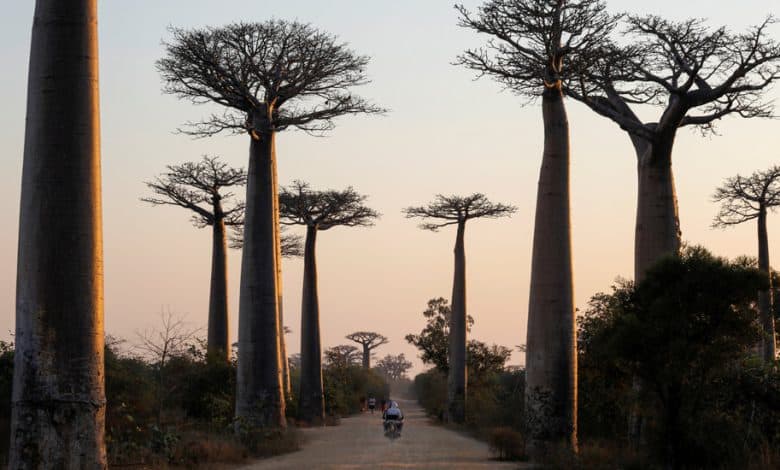The Unusual Evolutionary Journey of the Baobab Tree

Baobabs are one of the most charismatic trees on Earth, thanks in part to their unusual appearance. Their cartoonishly thick trunks are conspicuously oversized relative to their diminutive crowns, earning them the nickname “upside-down trees.” They can also live for thousands of years, contributing to their prominent place in cultural traditions and works of art.
For all the tales told about baobabs, though, their origin story has remained a mystery.
Scientists have debated for years how baobabs wound up in the places where they grow. Eight species exist around the world, and their distribution, like the trees themselves, is unusual: One species occurs across much of mainland Africa, while six are in Madagascar. The last is found faraway, in northwestern Australia.
Most researchers have hypothesized that the trees originated on mainland Africa. But findings published Wednesday in the journal Nature tell a different story. Baobabs instead most likely first evolved in Madagascar, where they diversified into different species. Two then embarked on long-distance oceanic journeys to distant continents.
“Madagascar is this wonderful natural laboratory,” said Tao Wan, a botanist at the Wuhan Botanical Garden of the Chinese Academy of Sciences and an author of the new study. He added, “In the case of baobabs, some very special geographical history on the island contributed to the species’ diversity.”
Dr. Wan and his colleagues sequenced the genomes of all eight baobab species and then used those data to understand how the trees evolved. They also investigated ecological factors that influenced the distribution of baobabs around Madagascar.
Their results indicate that baobabs’ common ancestor most likely arose in Madagascar around 21 million years ago. Competition with other plant life and factors like altitude, temperature, precipitation and volcanic activity caused new baobab species to emerge across Madagascar, as did fluctuating sea levels during various ice ages.